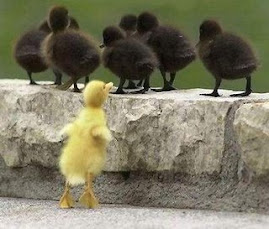I have worked on issues of urban land for my entire adult life. Even as a kid I liked to think about how land was used - buildings, parks, houses. Of course, I lived in Chicago and had a fantastic landscape to look at.
I saw this post in the Philly planning blog that is in my blog list on the right. The post is about using vacant urban lots for gardening. Now this is not a new idea - urban gardens have been around since at least the 1970s. But Philly is trying something new - greenhouses for urban farming on city owned vacant lots. First, Philly's redevelopment authority does land banking - they acquire vacant property and hold it in a "land bank" until something can be built there. Usually the city would sell the lot to a nonprofit organization to build affordable housing, or sell a group of lots side by side to a developer to build retail or mixed use to benefit the neighborhood. It often takes quite a while to get those kinds of deals organized and vacant lots often sit vacant for years and years. Some cities are still sitting on vacant land that was cleared during Urban Renewal in the 1960s!
The Philly Redevelopment Authority is going to let farmers use their vacant lots for up to 5 years. They are going with larger sized lots (1/2 acre minimum - about the size of a large suburban house with large yard) to start. Greenhouses are not super expensive, but not cheap either. It might not make sense to put a tiny greenhouse on a tiny lot. Anyway, there are several very good things happening in this project. The city recognizes that a blighted vacant lot is not good for the city, but it can be an opportunity if you do something productive with the land. Because urban land markets are not as quick to turn into valuable land as the suburbs, you sometimes need an interim use. So instead of blight, there is opportunity. Another good thing happening is that the city is encouraging sustainable development - grow local, consume local is a very important part of cutting down on our carbon footprint. Instead of shipping vegetables in from Ohio, you can grow it locally and more cost effectively. The other good thing is that most inner city neighborhoods do not have easy access to good produce. This will promote more healthy eating and still stay within a modest household budget. These greenhouses can grow organically, they can grow a variety of different veggies - imagine 20 different types of peppers! The bonus of a greenhouse is that you can use solar panels to grow in the winter. Plus - a greenhouse means you do not have to worry about contaminated soil - you can grow in boxes above the ground.
This project is a win-win and meets the triple bottom line of sustainability - it is economically sustainable, environmentally sustainable, and socially sustainable. It is innovative and not just a gimmicky thing. This is proven technology, a long standing craft, and definitely needed and usable by the public/consumer.
So, look around Camden. You will see a lot of vacant land. At City Hall the answer is always - we can't do anything about vacant land. Well, look across the river because they have a good idea. Urban farming can provide a commodity that can be traded, bartered, sold, and consumed by the grower. Imagine growing, green, productive activity on Camden's most blighted vacant lots. I like it.
Urban revitalization strategy #5: go green, be innovative when it comes to using urban land!
Subscribe to:
Post Comments (Atom)









No comments:
Post a Comment